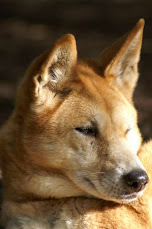
Range: South America, North and East Central.
Habitat: Always found near water, swamp environments. The flooded Pantanal region of Venezuela is classic Anaconda habitat.
Natural Diet: Mammals, birds, fish and small crocodilians.
Diet at RainForest: Pre-killed rodents Size: Females 12-18 feet, Males 6-11 feet
RainForest Facts: The heaviest of all living snakes, the female Anaconda can reach lengths of 20 feet and weights of over 300 pounds. Male Anacondas are considerably smaller than females, a large male may only be 8-10 feet in length and is a considerably thinner bodied animal. A highly aquatic snake, the Anaconda is much more likely to be encountered in the wild in or near a body of freshwater. The name Anaconda literally translates to "Water Boa"
The Anaconda is considered by many to be an aggressive animal in captivity. Anacondas have a very large number of sharp, rear-facing teeth.
A long lived animal in captivity, the Anaconda may live as long as thirty years. In the wild predators of even large females undoubtedly shorten the average life span. Large Black Caiman have been observed killing and eating females of up to 15 feet in length.

Anacondas mate in an unusual fashion. Several males are attracted to an ovulating female resulting in a "mating ball" that can often obscure the female from view. The mating always takes place in water. After a gestation of six months the females give birth to live babies in the late spring to early summer, birth generally coincides with the wet season in the animals native range. A large female is capable of producing up to 80 babies at a time, on average the female Anaconda will have 20-30 young. Predators account for a high mortality among juvenile Anacondas, Tegu lizards, birds of prey and crocodilians all consume young snakes.
Female Anacondas can reproduce as early as 4 years of age.
One recognized subspecies of Anaconda lives in the southern end of the Green Anacondas range, the Yellow Anaconda. The Yellow Anaconda is a smaller, and more brightly colored snake. A large Yellow Anaconda may only attain a length of 8 feet compared to well over 15 feet for a large Green Anaconda. Like the Green Anaconda, the Yellow Anaconda gives birth to live babies. The litters are slightly smaller in average number than the Green Anaconda, 10-20 is an average number of babies born to a healthy female Yellow Anaconda.
All Pythons are constrictors. Snakes that hunt using constriction as a means of subduing prey will very quickly grab their prey with their teeth using a very fast strike. The constrictor will quickly wrap coils of their bodies around the prey and squeeze or constrict the prey item. This process does not actually crush the prey and break its bones as is widely reported in the media. Instead, they squeeze tightly so that the prey animal can’t breath and it suffocates, this process usually requires about 3-4 minutes for the prey animal to be killed.
Once the snake is certain the prey item is dead they then begin to search for the animals head, virtually all prey animals are consumed head first. This process allows the snake to literally "fold" the arms and legs of the prey animal back as the creature is swallowed. Contrary to popular belief a snake does not "unhinge" it's jaws, the jaws in fact are not actually attached in a mechanical way. Long tendons and muscles connect the upper and lower jaws. The lower jaw is actually made up of two separate bones to further enhance the animals ability to manipulate large prey items.

Once the snake has the animal past it's jaws a series rhythmic muscular contractions then pull the prey down the snake’s throat and into its stomach. A very large prey item can be observed in the snakes stomach as a large bulge. Contrary to popular belief the large prey item is not digested by slowing moving down the length of the snake. Once the prey animal reaches the stomach, usually about 20 minutes for a very large item, the food item is stationary in the snakes stomach as it is gradually digested. The size of the meal can have an impact on the duration of the digestion, but external factors such as ambient air temperature play a larger roll. The snake must be careful not to eat when temperatures are too cool, the meal will quite literally decompose faster than the snake can digest it, causing a gaseous bloating in the snake that can result in death. Ideal air temperatures allow the snake to digest the meal prior to the food item decomposing! Snakes often will regurgitate a meal when the conditions do not allow it to properly digest the meal, this can include both temperatures that are too high and too low!

Member of the boa family, South America’s green anaconda is, pound for pound, the largest snake in the world. Its cousin, the reticulated python, can reach slightly greater lengths, but the enormous girth of the anaconda makes it almost twice as heavy.
Green anacondas can grow to more than 29 feet (8.8 meters), weigh more than 550 pounds (227 kilograms), and measure more than 12 inches (30 centimeters) in diameter. Females are significantly larger than males. Other anaconda species, all from South America and all smaller than the green anaconda, are the yellow, dark-spotted, and Bolivian varieties.
Anacondas live in swamps, marshes, and slow-moving streams, mainly in the tropical rain forests of the Amazon and Orinoco basins. They are cumbersome on land, but stealthy and sleek in the water. Their eyes and nasal openings are on top of their heads, allowing them to layin



